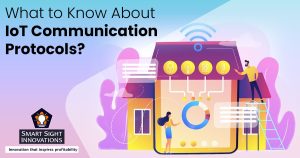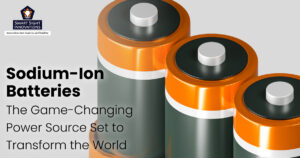 The main goal of IoT is to enable communication between devices that are not traditional computers. To interact with gateways, programs, servers and cloud platforms, IoT devices need to have connections as it allows devices to transmit and receive data across a network.
The main goal of IoT is to enable communication between devices that are not traditional computers. To interact with gateways, programs, servers and cloud platforms, IoT devices need to have connections as it allows devices to transmit and receive data across a network.
IoT platforms provide multiple benefits in the manufacturing environment from boosting automation and productivity to generating new management models. IoT technology is constantly developing with various service providers, a wide range of platforms and millions of new devices appearing every year.
As a result, developers have a lot to consider before joining the IoT ecosystem. Sensors, gateways, devices, data, business, technology users and value-added information are some of the layers of the IoT technology ecosystem.
- Sensors are in charge of converting analog signals to digital signals and serve as the link between the physical and digital worlds.
- Gateways are data-gathering devices that gather data from the sensors and transmit it to a backend system.
- The device layer connects the device to and engages with a network through the use of connections, gateways, hardware, software, sensors and controllers.
- Businesses leverage the collected Data by examining it and utilizing it to further business goals and take informed decisions.
- The business layer manages the billing and data markets, among other business processes associated with IoT technology.
- The user layer is where people use IoT devices and technologies.
- Value-added information is the front end of the entire IoT system that gives the users useful insights and is displayed in the form of numbers, graphs, alerts, etc.
With the aid of data-driven insights, improved operating procedures, new business endeavors and efficient material consumption, IoT technologies allow you to alter your organization. Your business can use data analysis and practical knowledge from IoT to make quick and informed decisions.
IoT Communication Protocols
The technology that supports computer networks is evolving at an extremely rapid pace, which has led to the production and deployment of billions of electronic devices worldwide. Several manufacturers produce these devices and gadgets using sophisticated hardware and IoT development resources to overcome limitations that prevent them from communicating and exchanging data with each other.
Protocols help fix issues by providing a channel and set of rules. They are a collection of regulations created between devices that specify how data can be shared in a dependable and secure manner across the network. Digital communication relies heavily on protocols since they specify how data should be formatted, sent and received.
As there are many distinct data types and applications, Organizations utilize different communication and network protocols to work with the distinct data types and applications. Some of the most popular IoT communication protocols available are:
1. Bluetooth
It’s effective for sending high-speed data for distances of up to 10 meters. Small amounts of data from wearables or sensors can be transmitted effectively using Bluetooth.
2. Zigbee
It’s a set of communication protocols for building local area networks using compact, low-power digital radios, based on the IEEE 802.15.4 standard (a technical specification that describes how a wireless personal area network or WPAN, functions).
3. WiFi
It’s common in households and workplaces due to its low operating costs and works in the frequency of 2.4GHz and 5 GHz.
4. Z-wave
It’s a distributed network that connects devices using low-energy radio waves. It’s used in home automation systems, operating at up to 100 Kbps in ISM frequency bands.
5. Cellular Data
Cellular networks can handle large data flows. Due to its broad connectivity range, it’s an ideal choice for linking devices. Additionally, there are cellular communication subtypes like LTE-M and NB-IoT that offer more data capacity and less power consumption. These subtypes are designed to enable IoT devices that require a long battery life or are used in places where conventional 4G technology is challenging to access.
6. Ethernet
This affordable cable connection option offers a quick data connection and low latency.
7. Near Field Communication (NFC)
When two devices are placed close to one another, NFC uses electromagnetic communication between their antennae. Stores use NFC technology for contactless payments. It has a range of a few centimeters and operates in the 13.56 MHz frequency spectrum.
8. Low-power, Wide-area Networks (LPWAN)
LPWAN allows communication across a minimum of 500 meters, consumes little power and enables long-distance connectivity.
9. Sigfox
For machine-to-machine (M2M) applications, Sigfox is the best long-range network since it uses less power than other long-range networks. This makes it an excellent option for connecting remote devices that must operate on batteries for extended periods without being charged.
Sigfox operates in the industrial, scientific and medical (ISM) bands using an ultra-narrow band (UNB) technology, with a specialized infrastructure. While it can be utilized locally, a local operator is required.
IoT Communication Guidelines
It’s crucial to understand the specifications of each technology before deciding to buy and install an IoT solution. Digital message formats and rules are formally described in communication protocols and are necessary for message exchange within or across computing systems.
Communication protocols are crucial to communication networks and other systems as they ensure uniformity and consistency in sending and receiving messages. Protocols differ greatly in their range, memory requirements, energy requirements, installation costs, etc. Below are some of the main aspects of a communication protocol.
-
Range
This denotes the maximum distance for two networks or devices to communicate with one another. The key factors affecting this are transmission power, frequency band, weather patterns, location and modulation style.
-
Speed
This refers to the amount of data transferred in a given time. The unit of measurement is typically given in bps (bits per second), Kbps, Mbps or Gbps.
-
Scalability
It’s the challenge of expanding the number of devices installed, the number of end users and the volume of data to store and analyze without transferring the technology.
-
Power consumption
This aspect specifies whether continuous power or the use of batteries is required. It is the amount of energy a device needs to function throughout its lifetime.
-
Interoperability
It’s the ability to share information between networks and devices, regardless of their function.
-
Cost
It’s the cost of setting up and securing a certain technology.
Securing data transmission and reception is essential to guarantee the communication sent between devices only reaches the intended ones.
There is significant potential for all types of industries, including manufacturing, transportation, energy, agriculture, retail and government, to operate more efficiently and offer new value to customers by implementing the right IoT solution. These new sources of data provide timely and important insights about your business and customers.
The IoT protocols ensure that data from one device or sensor is read and interpreted by another device, a gateway or a service. For various contexts and applications, various IoT protocols have been developed. Using the correct protocol in the proper environment is crucial given the wide variety of IoT devices that are currently accessible.














